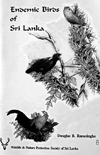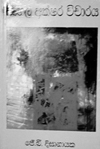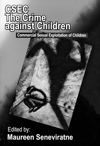|
|
|||||||||
| Taking wing on a flight of bird facts What is the size of the Crimson-backed Wood Pecker? What do the eggs of the Ceylon Crested Drongo look like?
Answers to these and much more on the size, nesting and eggs of all 33 birds endemic to Sri Lanka are found in this 79-page booklet, Endemic Birds of Sri Lanka, packed not only with information but also colourful and eye-catching photographs. The 10 new birds included on the endemic list of this country by Dr. Pamela Rasmussen of the American Smithsonian Institute are the Pompadour Green Pigeon, Serendib Scops Owl, Ceylon Small Barbet, Crimson-backed Wood Pecker, Ceylon Swallow, Ceylon Wood Shrike, Black-Capped Bulbul, Ceylon Scaly Thrush, Ceylon Scimitar Babbler and the Ceylon Crested Drongo. Two pages have been allocated for each bird whose taxonomical classification, family name, scientific name and also the Sinhala and Tamil names have been given so that the reader finds it easy to look for specific information. While “Main Facts” covers the bird’s size, details on nesting and descriptions on what the eggs look like, no aspect has been left out with the life cycle, habits, food, distribution in the country and conservation being dealt with scrupulously. Special features have also not been left out and a miniature map of Sri Lanka shows where the birds can be located. For some birds, an additional box titled “Do You Know?” gives titbits on the folklore of these birds, their songs and descriptions of their calls, characteristics peculiar to them and lesser known facts. The photographs are by Gihan de Silva Wijeratne, Dr. Pathmanath Samaraweera and Chandima Kahandawala while Dr. Samaraweera has also contributed some of the line drawings along with Jayantha Jinasena. Some other drawings have been taken from Gunter Lamsfuss’s book Die Vogel Sri Lanka. The book also includes a list of the National
Parks, the Strict Nature Reserves, the Nature Reserves, the Sanctuaries
and the Jungle Corridors, with their respective extents, courtesy
of the Department of Wild Life and Conservation. Endemic Birds of Sri Lanka is a book that should be in the collection of keen bird watchers. The book priced at Rs. 225 and written for the Wildlife and Nature Protection Society of Sri Lanka, is on sale at its office at No. 86, Rajamalwatte Road, Battaramulla.
Unravelling the Sinhala word An accessible introduction to Sinhala Graphology. Sinhala Akshara Vicharaya (Sinhala Graphology) by J.B. Disanayaka. Reviewed by Sandagomi Coperahewa. A Kalubowila: Sumitha publication. Price : Rs. 400. Professor J.B. Disanayaka is a leading authority on the subject of Sinhala language. His latest book deals with Sinhala graphology. The Oxford English Dictionary (online) provides the following meanings for the term ‘graphology’: The study of handwriting; the art of science of inferring a person’s character, disposition and aptitudes from the peculiarities of his handwriting; the system of graphic formulae - the notation used for graphs; the study of written and printed symbols and of writing systems.
Graphology, in its linguistic sense, is the study of the systems of symbols that have been devised to communicate language in written form. According to David Crystal, world authority on the English language and linguistics, graphology in this sense has nothing to do with the analysis of handwriting to determine the psychological characteristic of the writer – an activity for which the same term is often popularly used. The term graphology was coined on analogy with phonology. This book is the first volume of a series on the contemporary literary usage and it provides a solid background to the field of Sinhala graphology. Sinhala has a writing system that goes back to the third century B.C. The present writing system is an outcome of various linguistic, historical, social and cultural processes that were at work over two millennia. With the passage of time the Sinhala alphabet underwent radical changes. In recent years, modern computer technology has also made a considerable impact on Sinhala graphology. This book is divided into 10 chapters and each chapter consists of 10 units. Chapter one deals with the origin of the Sinhala language and its genetic affinities. In chapter two, the author briefly explains the evolution of the Sinhala language, from Sinhala Prakrit to the contemporary period and in chapter three, the history and evolution of the Sinhala letters from the Brahmi period to the modern Sinhala script. Here he pays special attention to the evolution of the Sinhala writing system and covers topics such as the impact of printing, typewriter and computers on the Sinhala alphabet. However, he overlooks the topic of Sinhala shorthand writing. The fourth chapter deals with the concepts related to ‘letters’. In this chapter, the author presents a brief survey about the concept of akshara or akuru (letters) in Sinhala usage. As a linguist interested in Sinhala folk usage, he provides various idioms related to the concept of letters: akurata veda, akuru karanava, at akuru, gale ketu akura, mala pote akura, pansal akuru, mul akuru etc. Moreover, he investigates some notions about the term hodiya (alphabet) and then provides a brief account on the various writing systems of the world. This chapter also contains an account on the Brahmi and Roman letters. Various Sinhala alphabets from the 13th century to modern times are discussed in chapter five. Prof. Disanayaka first deals with the alphabet of Sidat Sangarava and then describes various Sinhala alphabets. This chapter also reviews the Sinhala alphabetical order and some current issues related to it. The subsequent chapters are devoted to describing the phonological basis of Sinhala letters. In this analysis, the author utilizes both the contemporary and traditional classification. Accordingly, chapter six covers Sinhala vowels (pranakshara) and chapter seven deals with Sinhala consonant letters (gatrakshara), with a classification of vowel and consonants. The eighth and ninth chapters present another classification on Sinhala consonants on the basis of two parameters: point of articulation (Sthanna) and manner of articulation (vilasa). The last chapter examines Sinhala letter shapes, sizes and scale and provides much data for Sinhala typographers. However, in this chapter the author disregards the graphical identity and expression of Sinhala letters. The book ends with appendices that present useful diagrams and charts related to chapters and list of references.
Startling truths of a horrendous crime CSEC- The Crime Against Children. Edited by Maureen Seneviratne. Reviewed by Carol Aloysius A young naked boy crouches in a corner, his hands covering his head as if to shield himself from the menacing figure that towers above him, hands and legs outstretched as if to devour the young boy.
This stark picture on the cover of the latest publication by P.E.A.C.E sums up the contents of CSEC- The Crime Against Children edited by Maureen Seneviratne, Chairperson of P.E.A.C.E., an NGO that has been in the forefront of combating child abuse in Sri Lanka for over 15 years. If the picture was meant to shock the reader, it most certainly achieved its goal. Equally shocking are some of the startling `truths’ collectively revealed by the contributors. Commercial sexual exploitation of children is by no means a new phenomenon in Sri Lanka. While the gross exploitation especially of boy children had been professionally researched as far back as 1980, it was only after a study initiated by ECPAT International with the intention of ending child prostitution in Asian tourism that a serious attempt to eradicate this evil malady in our society was made by an NGO in Sri Lanka. The study, carried out in three Asian countries including Sri Lanka, and conducted by some of the core members of PEACE, revealed that a large number of especially boy children in Sri Lanka were being sexually abused all year round by a certain brand of visitors from abroad who came here for just this purpose. This disclosure prompted the newly formed P.E.A.C.E organization to launch a campaign with the primary objective of focusing attention and creating awareness among the public and the state authorities of this horrendous crime against society’s most marginalized children. The campaign soon took on the dimensions of a full scale war that spread to every district in the island. It was no ordinary battle. As Ms Seneviratne who has headed it since its inception says in her introductory note, “ Despite the acronym PEACE we were really engaged in … a deadly combat against the hideous crimes of prostitution and trafficking of children.” To achieve its goal of raising awareness on a subject that had been conveniently hidden under the carpet for years, and taking remedial measures to end child prostitution, the PEACE organization had to first arm itself with data collected from first person accounts. It was by no means an easy task. As the editor says,“ We often encountered strident resistance to our work.” The survey disclosed some shocking truths. Having visited the seamiest parts of the country, the slums, shanties and beaches, the editor says in her introductory note, “We saw the ugly and frightening face of poverty which leads children to be forced to sell their bodies for adult sexual satisfaction. We met children raped, sexually assaulted and maltreated in many incredibly cruel ways. We empathized with their trauma , their suffering, their feelings of shame, guilt and hopelessness. We shed our tears for them. But we also raised three cheers for the resilient ones who have resisted the pimps and procurers and the fairy godfathers who beckon.” Their labour of love was not in vain. Besides raising awareness among the public in general, it also spurred successive governments in Sri Lanka to respond in a positive way to end this horrendous crime against children. Together with a distinguished panel of contributors, all of them eminent child activists, P.E.A.C.E sets out to finally record and document its achievements in combating child abuse in this unique publication. Which the editor aptly describes as, ‘our magnum opus’. Of these achievements , the editor says, “The greatest `reward, we have gathered is the spin-off from our endeavours ; the motivating of government authorities and officials to add Prevention of C.S.E.C ( Commercial Sexual Exploitation of Children) on their agenda; the motivating of other NGO’s and groups including corporate sector to take up the issues; the setting up by Act of Parliament the National Child Protection Authority (NCPA) , the establishment of the Police child Protection Bureau with Desks all over the country, the several landmark High Court sentences passed on criminal child abusers, and most importantly, the raising of and sustaining of public interest in this once outcast child.” The articles included in the book are well researched, informative and comprehensive, covering practically all aspects of child abuse. Also included for the readers’ benefit are the separate chapters on the Convention on the Rights of the Child , the definition of Child Prostitution, and a global perspective of CSEC by ECPAT International. To the uninformed reader each of these first hand accounts is also an eye opener and provides much food for thought. Not only do we get a rare insight into the subterranean world of the paedophile and the way he attacks his hapless victims, we learn that despite the machinery that has now been put in place to prevent child abuse, there are still serious lapses that need special consideration. Of the writers, special mention must be made of : Tyrrel Cooray’s discussion of the Convention of the Rights of the Child with special reference to the Right of Protection; Prof. Vint Muntarbhorn’s informative discussion in Child Pornography and the Internet; Lalani Perera’s useful comments on the proposed law reform for the Better Protection of Children from Sexual Abuse and Exploitation and Arresting CSEC, Law reform to Combat Child Abuse – The Past, Present and Future ; Kalyananda Tiranagama’s startling disclosures of the ‘flaws in the child protection legal code and the need for review; Maureen Seneviratne’s eye opening discussion on Legal Monitoring of Child Sex Abuse in the Courts. Equally absorbing and revealing is S. Thurairaja’s The Penal Code to Prosecution of Child Abuses. The latter who draws from his own personal experiences raises important questions on a number of child abuse related issues, such as the duration of sentences served on those found guilty of child abuse. As an example he notes that only one case out of 289 carried the maximum jail sentence of 20 years for rape. His observations on Obscene Publications relating to children reveals another shocking fact: namely, that there are at least 127 sites on the internet which carry nude photographs of children said to be from Sri Lanka. Yet bringing the offender to book is likely to remain a Herculean task for the police, he says. As he points out, “I am unable to see any sophisticated investigations embarked on this offence….and therefore most of the cases literally fail.” Other enlightening articles include Child Pornography and the Internet, law; Reforms to combat child abuse, Abuse of children and its effects, Child Rights and the role of parents, teachers and the media to combat child abuse. |
|||||||||
Copyright © 2006 Wijeya Newspapers
Ltd. All rights reserved. |


